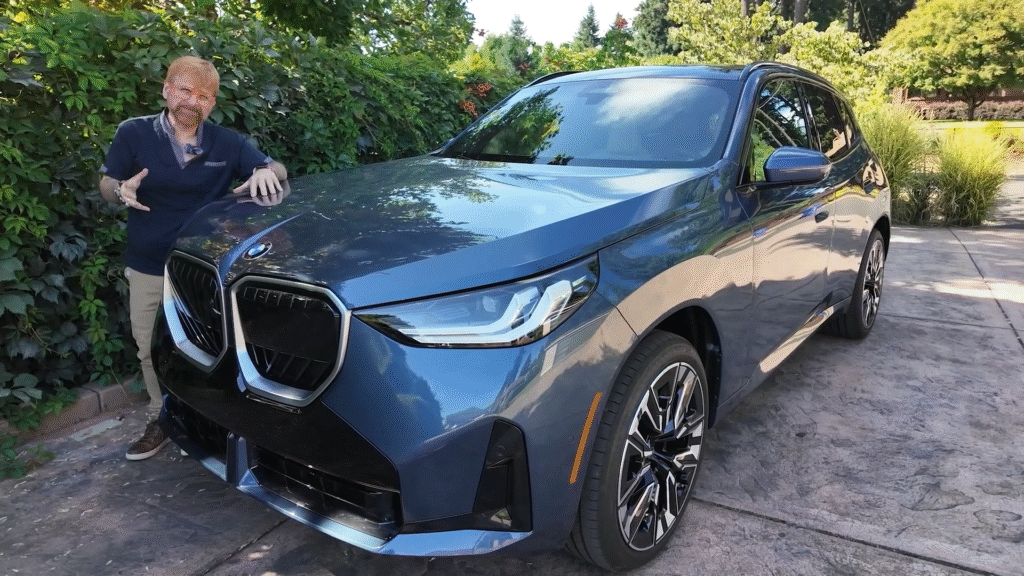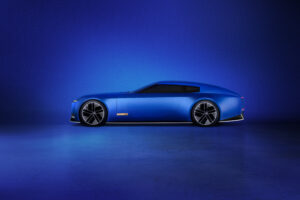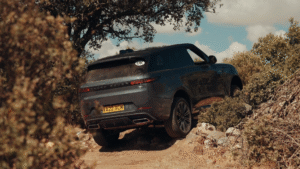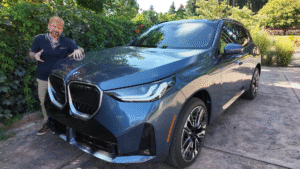2025 BMW X3 Refresh Keeps Familiar Driving Feel

A mid-cycle update with quiet strength, arriving just as EVs loom large
The 2025 BMW X3 may look like an all-new SUV at first glance, but don’t be fooled. Scratch the surface and you’ll discover a vehicle still rooted in BMW’s familiar CLAR platform. That means no wholesale reinvention, no grand leap into BMW’s upcoming all-electric Neue Klasse future just yet. Instead, this is a careful mid-cycle refresh designed to keep the X3 appealing in one of the most competitive corners of the luxury SUV market. It is evolutionary, not revolutionary. And that may be precisely what BMW needs right now as buyers look for stability while the industry pivots toward electrification.
BMW calls the X3 one of its bread-and-butter models, and with good reason. It regularly ranks among the brand’s top sellers worldwide. Mess with it too much and you risk alienating loyalists. Change it too little and you risk falling behind Audi and Mercedes in the design and technology arms race. The 2025 refresh splits the difference, quietly improving the formula without tearing up the playbook.
Why does this car matter right now?
The timing of this facelift matters because BMW is balancing two worlds. On one side, the current lineup still leans heavily on combustion and mild-hybrid technology. On the other, BMW is preparing its seismic shift to full electrification with the Neue Klasse platform later this year. The X3, codenamed G45, acts as the bridge between the two eras.
Visually, the update is subtle but noticeable. The kidney grille grows larger, the body creases look sharper, and the headlights slim down with modern LED signatures. Flush-mounted door handles and optional 21-inch wheels bring a touch of modernity, while keeping the overall look conservative. It’s not radical, but it’s enough for a mid-cycle refresh that hopes to blend in rather than shock.
The interior follows the same philosophy. BMW has introduced its sweeping curved display that combines a 12.3-inch digital driver cluster with a 14.9-inch central touchscreen running iDrive 9. It’s a clean look on paper, but critics note that moving all climate controls to touch-sensitive inputs can be distracting on the road. Materials are mostly premium, though some plastics feel less than luxurious for an SUV that starts above $50,000. The cabin aims for tech appeal but doesn’t always feel elevated compared with rivals.
Performance remains BMW’s calling card. The xDrive30 base model uses a turbocharged 2.0-liter four-cylinder mild-hybrid setup producing 255 horsepower, capable of 0–60 in around 6.2 seconds while delivering up to 29 mpg. The M50 trim, meanwhile, offers a 3.0-liter inline-six with nearly 400 horsepower. It’s not a full M model, but it delivers confident acceleration and a properly sporty character for a family SUV. BMW’s engineers have kept the steering sharp, the chassis balanced, and the brakes strong. In short, it still feels like a BMW behind the wheel.
How does it compare to rivals?
In this segment, rivals are not standing still. The Audi Q5 remains a style-forward option with bold interiors and plug-in hybrid variants that offer usable electric range. Mercedes has leaned hard into the luxury tech angle with its GLC, which offers a plush cabin and daring infotainment features. Lexus pushes its NX as a high-value alternative, and Genesis is capturing attention with the GV70, often praised for delivering more luxury at a lower price point.
Where does the BMW X3 fit? It plays the role of the steady hand. While Audi and Mercedes are experimenting with electrification and bolder design, BMW is choosing familiarity. U.S. buyers won’t get the European-market plug-in hybrid X3 30e, which boasts an estimated 56 miles of electric range under WLTP standards. That absence leaves BMW slightly exposed, especially as American luxury buyers increasingly cross-shop plug-in hybrids for tax incentives and commuting efficiency.
Still, the X3’s powertrains are refined, and its driving feel remains a strength. For many buyers, that balance of agility and comfort is why they choose BMW over rivals. The 2025 update doesn’t upset that formula, even if it doesn’t set new benchmarks. It’s a strategy of “hold the line” rather than “leap ahead.”
Who is this for and who should skip it?
The 2025 X3 is ideal for customers who value predictability. If you’ve owned an X3 in the past, this will feel instantly familiar. The design is sharpened, the tech is updated, and the powertrains are efficient without being experimental. For buyers who just want a dependable luxury SUV with a bit of driving enjoyment, this fits the bill.
However, not everyone will be convinced. Early adopters seeking cutting-edge electrification or bold styling cues may want to wait for the upcoming Neue Klasse iX3, due later this year. That model will sit on an all-new electric architecture with 800-volt charging capability, futuristic displays, and the kind of technology that defines the next generation of BMW vehicles. Buyers looking for maximum value might also lean toward the Genesis GV70, which offers a premium feel at a lower entry price.
In short, the 2025 X3 appeals to traditionalists and loyalists, but those hungry for revolution should keep their wallets closed for now.
What is the long-term significance?
This refresh represents BMW’s strategy of incrementalism at a pivotal moment in automotive history. Global regulations, shifting consumer tastes, and advancing battery technology all point toward an electric future. BMW knows that, and the Neue Klasse platform launching later this year is the company’s true bet on what comes next. But it also knows that millions of buyers are not yet ready to take that leap. For them, the 2025 X3 offers comfort in the familiar.
Long-term, this model may be remembered less for its innovations and more for its role as a stopgap. It provides continuity while BMW retools factories, prepares new supply chains, and rolls out its electric future. Pricing starts around $50,700 and climbs past $60,000 with options, which places it squarely in the heart of the premium midsize SUV segment. Safety ratings from the IIHS and NHTSA are still forthcoming, but the previous X3 scored highly, and BMW has carried over much of the same structure and safety tech.
So, while the 2025 X3 will not shock the market, it doesn’t need to. It steadies the ship. It reassures loyal buyers. And it quietly keeps BMW competitive until the bigger, bolder wave of electrification arrives. Sometimes, in the middle of an industry storm, being calm is its own kind of strength.







